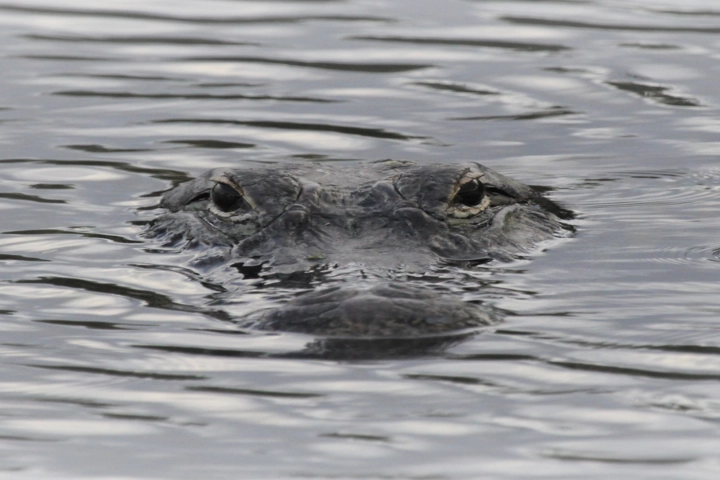
American Alligators
Alligators live in wetlands, swamps, rivers, lakes, ponds, and canal systems consisting of fresh or brackish water. They are mainly active at dawn and dusk. Most bites occur when an alligator is looking for food, a female is protecting her nest, or an aggressive male is looking for a female during mating season. To stay safe when near water, always make sure to pay attention to your surroundings and remember never to feed an alligator. Not only will feeding alligators make them more comfortable and dependent on humans, but it is also against the law.Snakes
There are water snakes such as the venomous cottonmouth (also known as the water moccasin) that swim and slither through Florida’s lakes and swamps. Other venomous snakes to watch out for are the eastern coral snake, the southern copperhead, the eastern diamondback rattlesnake, the timber rattlesnake, and the dusky pygmy rattlesnake. If you see a snake, stay calm, move away, and leave it alone.Spiders
Most spiders do not have the capability of penetrating through human skin and are more afraid of us then we are of them. However, bites happen when a human accidentally surprises a spider by getting close to it. Out of the 40,000 species worldwide, the two groups of spiders that would require you to get immediate medical attention after being bit are black widows and brown recluses. Both species of spiders can leave you with intense pain and muscle contractions.Stinging Caterpillars
In Florida, there are four primary stinging caterpillars (puss, saddleback, lo moth, and hag) in addition to less common species (buck moth, spiny-oak slug, and flannel moth). The spines connected to poison glands cause people to experience itching or burning sensations, some even having severe reactions.Ticks
Ticks can transmit diseases if given several hours to feed, so it is vital to find and remove one as quickly as possible. The ticks that are found in Florida are the American dog, lone star, gulf coast, and black-legged tick — which is a carrier of Lyme disease. Should you need to remove a tick, grab it firmly with tweezers and pull it out. All these animals and so many more depend on lakes and ponds for survival. However, there is a decline in the health of many Florida bodies of water, negatively affecting both animal and plant species. It is critical that individuals act to improve the health of their lakes and ponds to protect valuable resources.Aquatic Services
With our aquatic survey, we can determine if any fish or wildlife are present in your lake, pond, or other bodies of water and produce a treatment plan that will allow the animals and plants to thrive. We can remove and prevent invasive and unhealthy vegetation using safe and effective EPA-certified aquatic herbicides. For more information, call Sorko Services at 407-878-4492.Dangerous Wildlife Found Near Florida’s Ponds and Lakes in Central Florida
Serving Greater Orlando, Sanford and Kissimmee
Sanford | Orlando | Poinciana | Ocala | St Cloud | Winter Garden | Clermont | DeLand | Winter Springs | New Smyrna Beach | Winter Park
Orange County | Seminole County | Lake County | Osceola County | Volusia County | Polk County | Marion County | Brevard County
Home » Dangerous Wildlife Found Near Florida’s Ponds and Lakes
